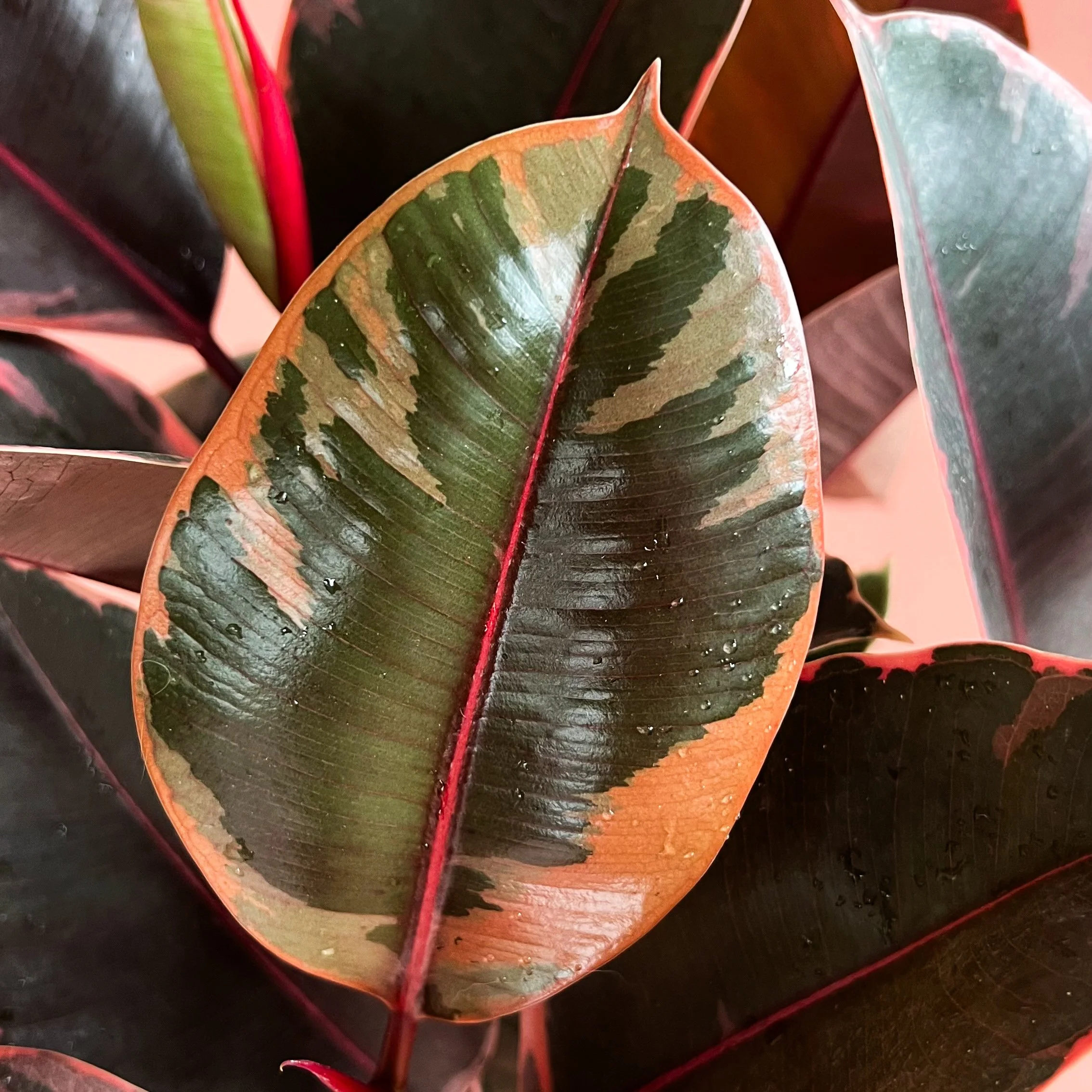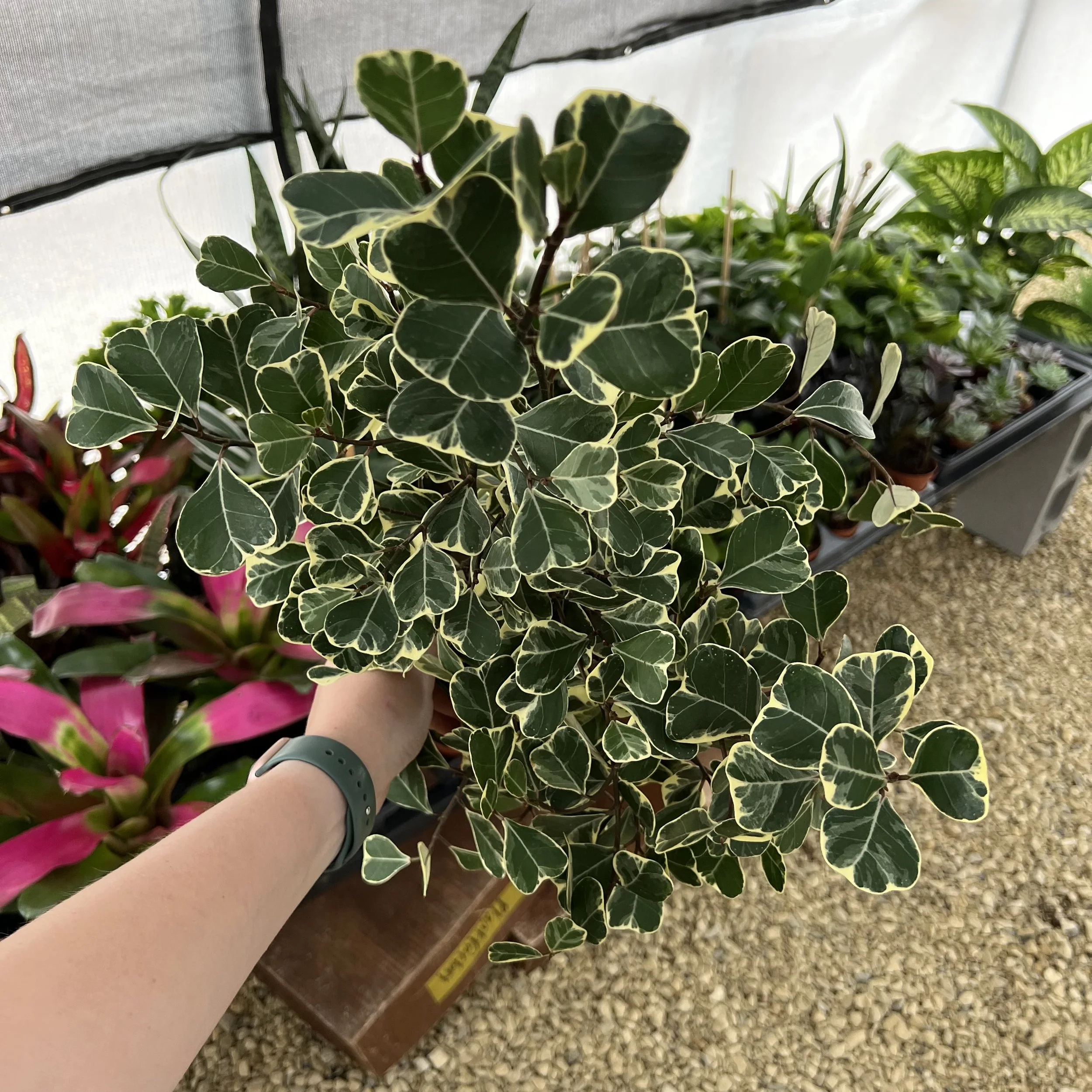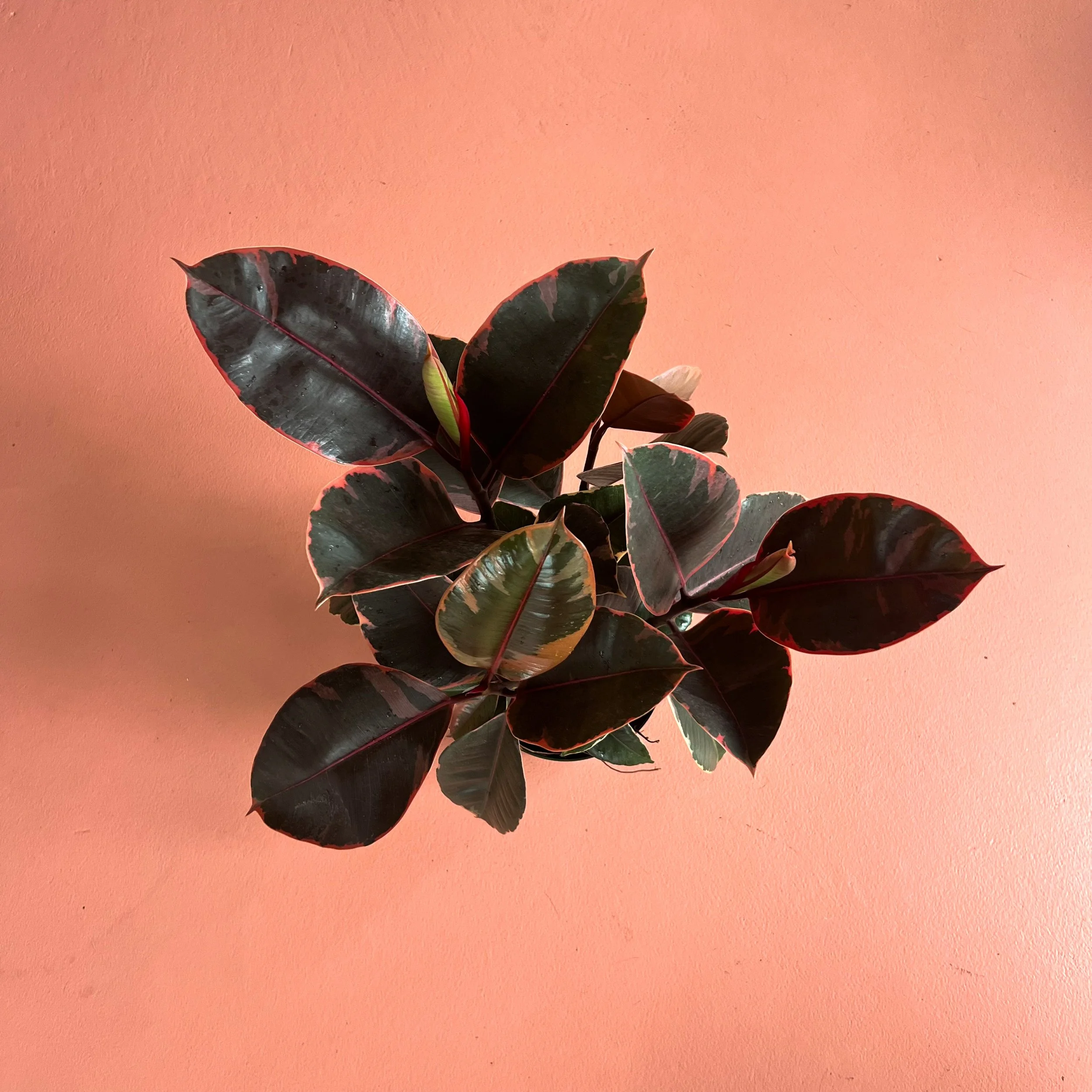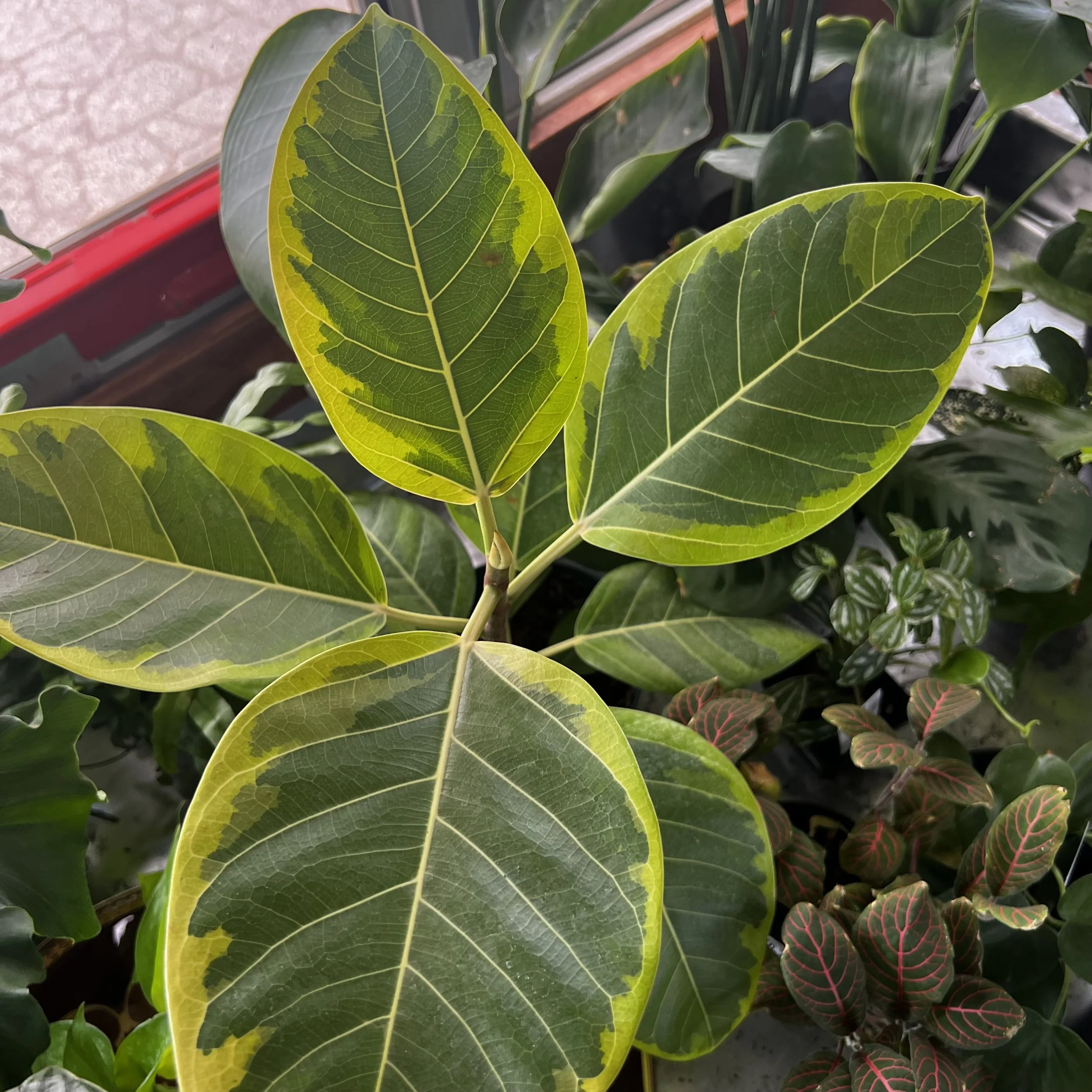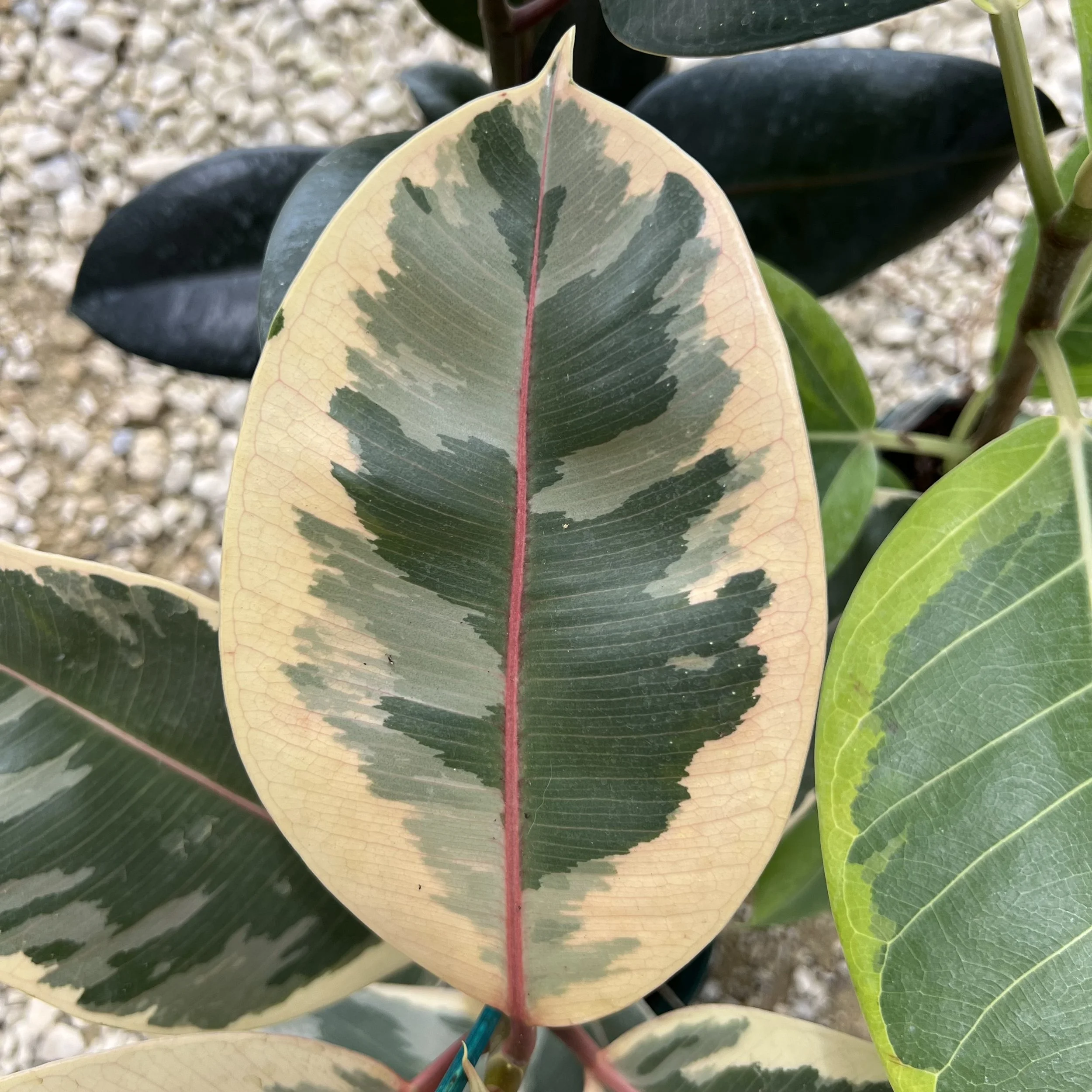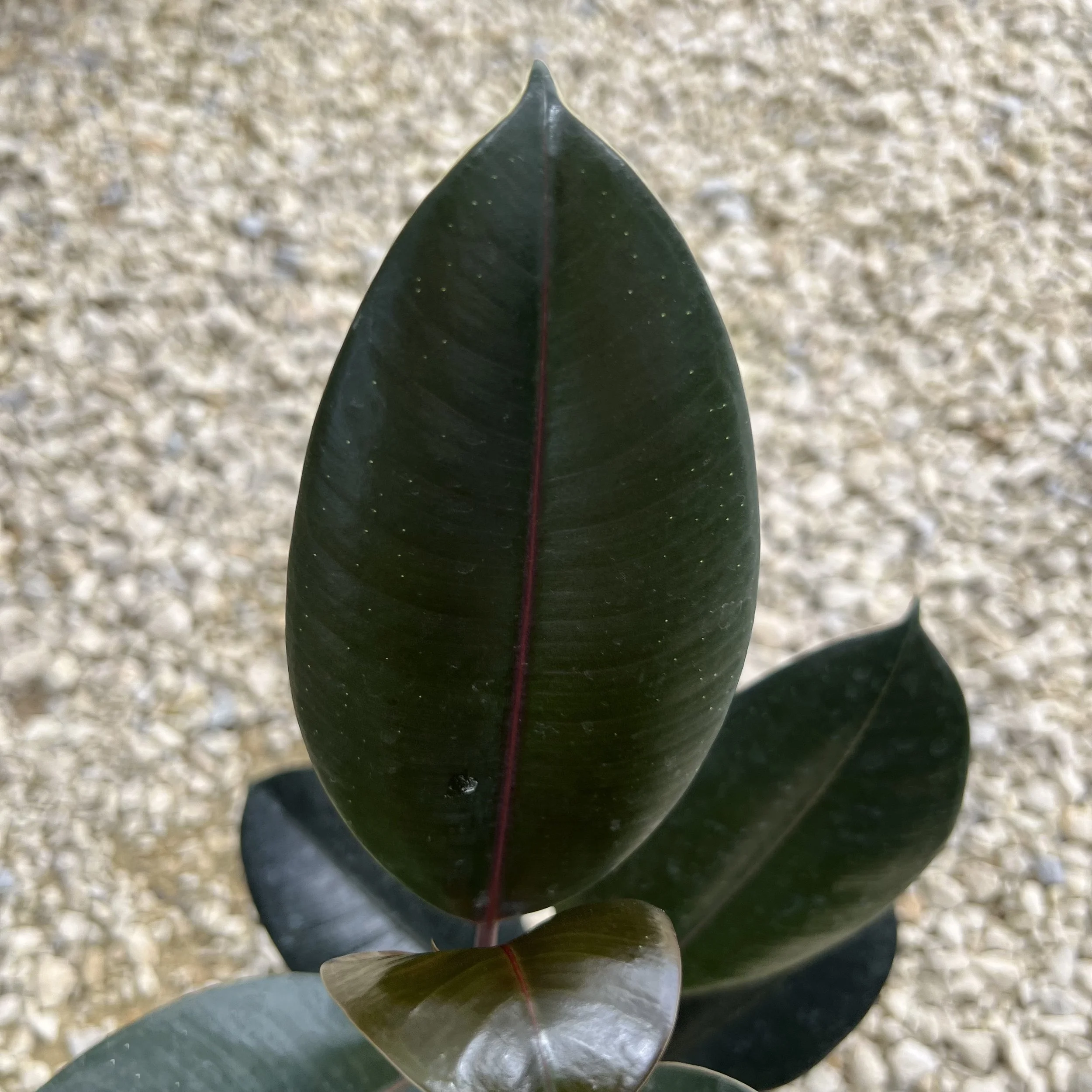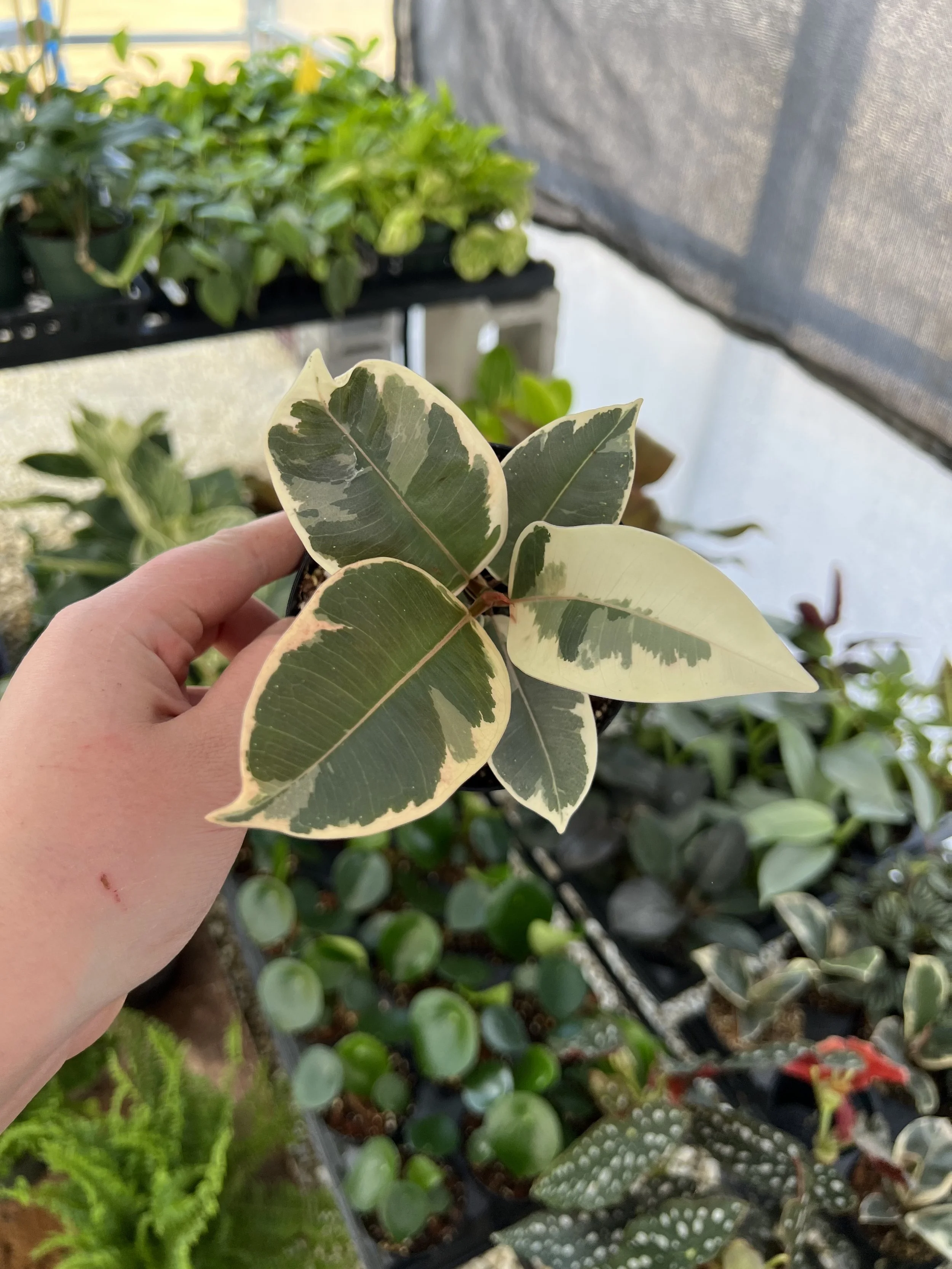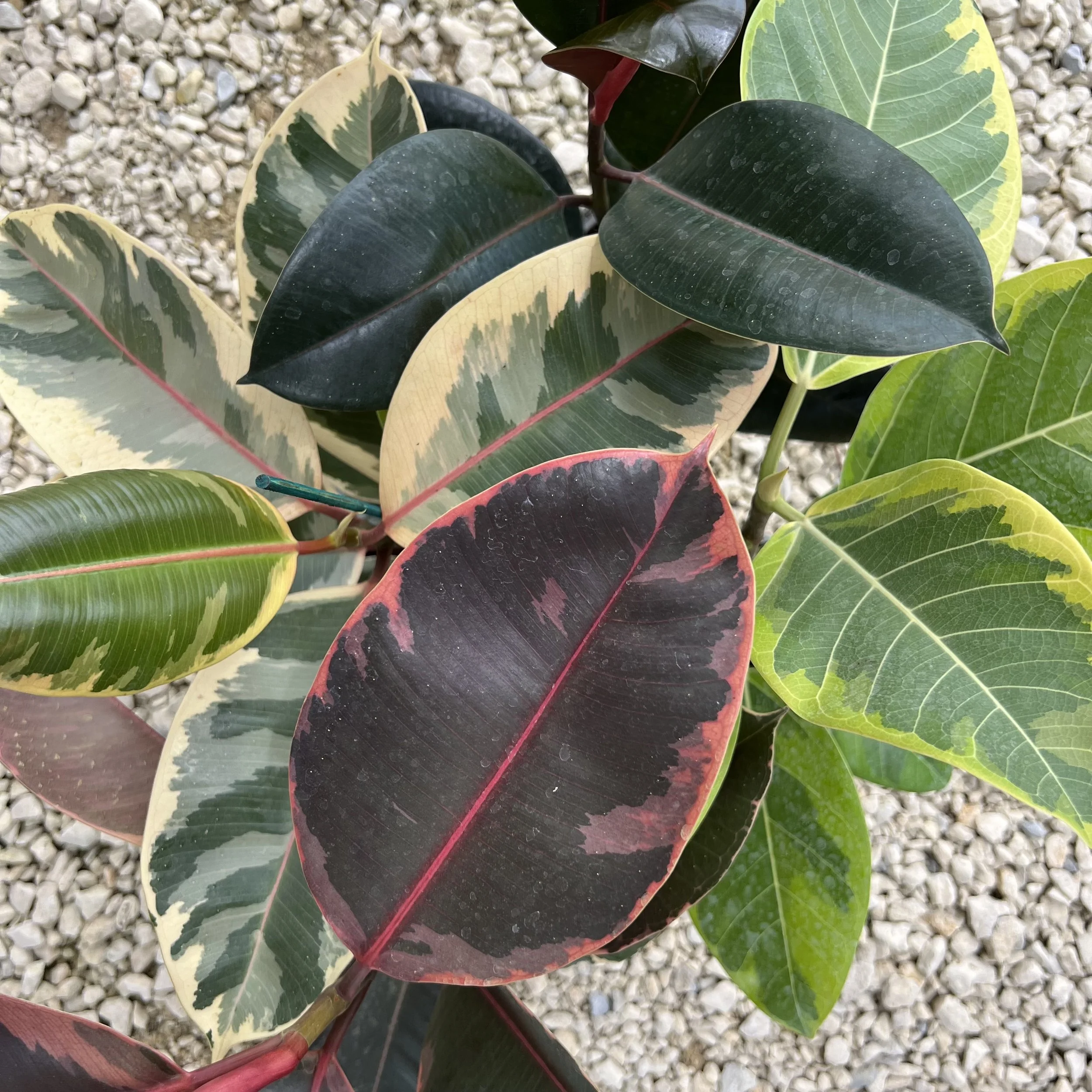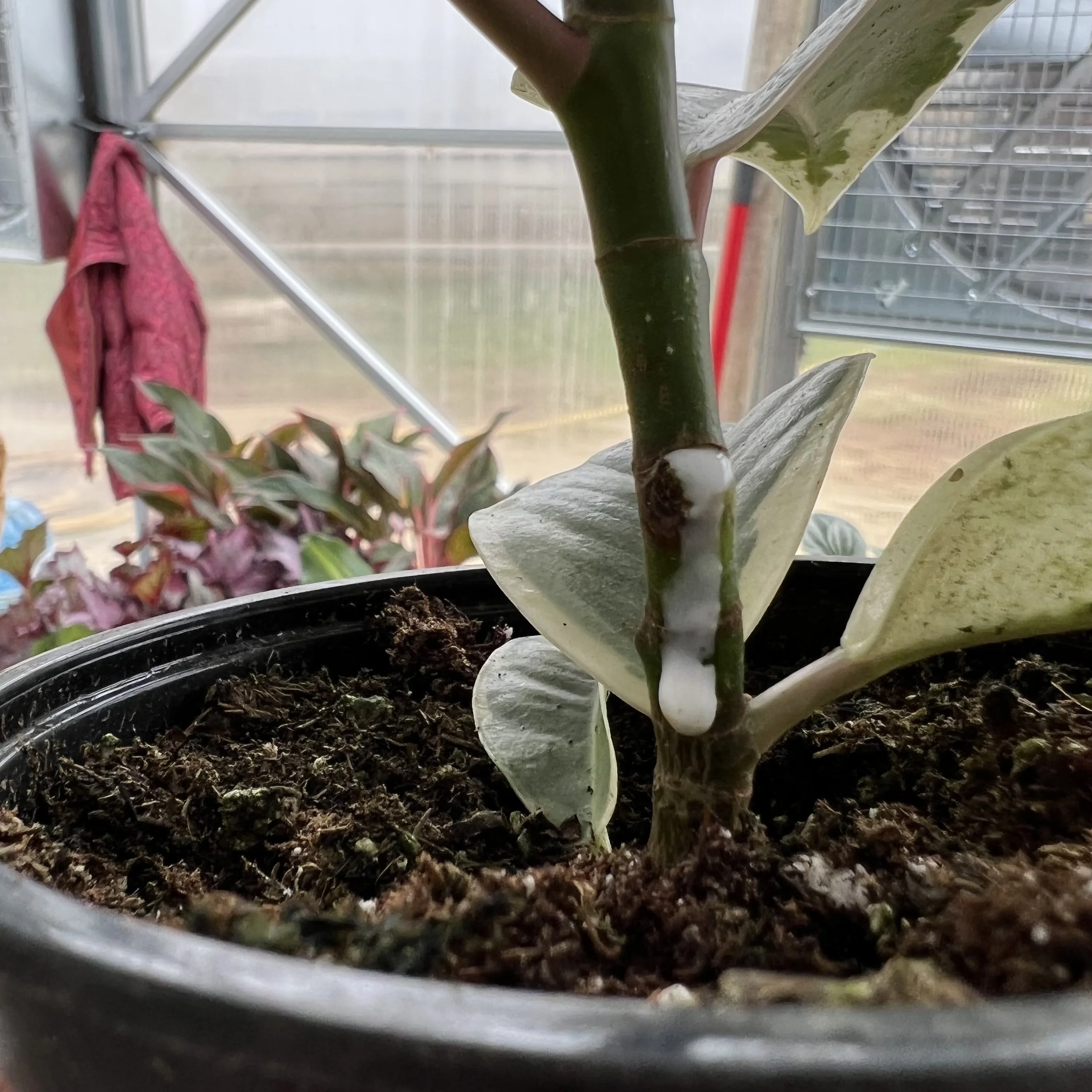FIGS
Family Moraceae
Ficus elastica | F. lyrata | F. benghalensis | F. microphylla
FIG
Family Moraceae
-
Light: Indirect, bright light is a requirement for all ficus plants. One of the biggest causes of plant decline is too little or too much light. Try to find an east exposure room with plenty of filtered light.
No east room? No problem! Ficus can tolerate brighter exposures if placed deeper in the room. Think window adjacent or opposite wall.
Temperature: 60-80 F
Humidity: medium to high; avoid drafty areas
-
Water: Provide water when the top 2” of potting mix is dry. Check in with your plant weekly to make sure it is not dry.
Repotting: Repot every 1-2 years into a slightly larger container (1-2” increased diameter or depth). Use a general purpose potting mix.
Fertilizing: Either…
Water Application: Incorporate fertilizer into your watering cycle once per month March through September. Dilute an all purpose fertilizer (20-20-20) by half OR use your favorite fertilizer rated for houseplant use in your water.
Slow Release: Incorporate slow release fertilizer pellets into the top inch of potting soil every 6 months. Apply the rate indicated for indoor plants on the label. If no recommendation for houseplants is present, apply 1/4 to 1/2 the listed rate.
Cleaning: Large-leaf species of ficus like fiddle leaf fig and rubber tree may require periodic cleaning. I suggest 1-2 times per year, use a wash cloth with room temp water to remove dusts and spots. If grimy spots persist, try a dab of baby soap! Learn how to clean plant effectively on my YouTube episode!
-
Moraceae houses two of my favorite trees—mulberry and Osage orange. I love picking mulberries in Kansas each June!
Like figs, mulberries and hedge apples have what is classified as a “multiple fruit.” What we would think of as a single fruit actually develops from a tightly clustered group of flowers—each with their own fruit that fuses to make one piece. Figs, mulberries and hedge apples are all multiple fruit producers.
-
(Listed in order of commonality…)
Leaf loss from incorrect light levels
Two-spotted spider mites
Leggy growth from too little light
-
Is ficus pet safe?
Well… yes and no. Ficus has latex sap running through its tissues. If a human or animal has a latex allergy, it can cause rash, drooling and digestive struggles if latex touches skin or is ingested.
Why is my ficus dropping leaves even though it is in a really good light environment?
Sometimes, leaf drop is a sign that your ficus is staying dry too long between watering cycles.
It can also be a signifier that there are pests present on the plant. Check for spider mites by looking for webbing on leaf backs and small red freckles where they would be munching.
Cultivars & Species
Have a more specific question?
I’m just a few clicks away.

